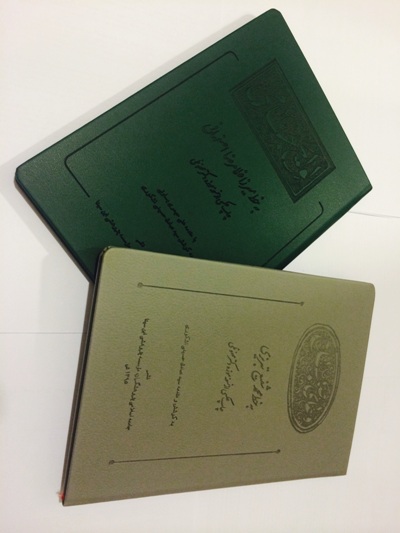Twenty Qur’anic scientific, cultural and artistic manuscripts from the Dr. Mahfouzi Cultural Works and Manuscripts Museum were unveiled in a ceremony at Hotel Espinas Palace in Tehran, on Saturday.
The exquisite and rare manuscripts are of high value given their antiquity, and were written in different historical periods. Their artistic aspects and visual techniques were highlighted in the presence of a large number of scholars, writers, literati and artists, Mehr News Agency reported.
The manuscripts included six complete volumes of Rumi’s ‘Masnavi Ma’navi’ from the Safavid era (7th century), ‘Kimya-e-Sa’adat’ (The Alchemy of Happiness) by the Islamic scholar Imam Muhammad Al-Ghazali of the 8th century and ‘Prayers’ of Khajeh Abdullah Ansari, Persian Sufi of the 11th century, written in ‘Nastaliq’ script.
According to Mohammad Sadeq Mahfouzi, the head of the Anthropology Encyclopedia Center of the museum, “Every year in the fasting month of Ramadan, 20 manuscripts from among the recent purchases of the museum which are more prominent, are unveiled”.
The museum is considered the greatest non-governmental museum in Iran which preserves a valuable treasure of Islamic and ancient manuscripts.
It has so far increased its manuscript collection to 40,000 and conducted several research projects in Persian, Arabic and English languages. The museum has become a global center of analyzing cultural and historical works, recording manuscripts with the help of foreign and domestic experts. It also holds calligraphy, painting and Iranian art exhibitions in support of artists.
Mahfouzi has two PhDs in clinical psychology and philosophy from British State University. He founded the anthropology center two decades ago out of his personal interest to help Islamic-Iranian culture and civilization. Publishing 300 books, tens of research articles in various fields of humanities, science and technology are some of his activities.
The center is in regular contact with world scientific institutions such as UNESCO, Oxford, New York and Moscow universities and Islamic Centers in Germany to augment its role in and contribution to cultural interaction with contemporary science centers.


